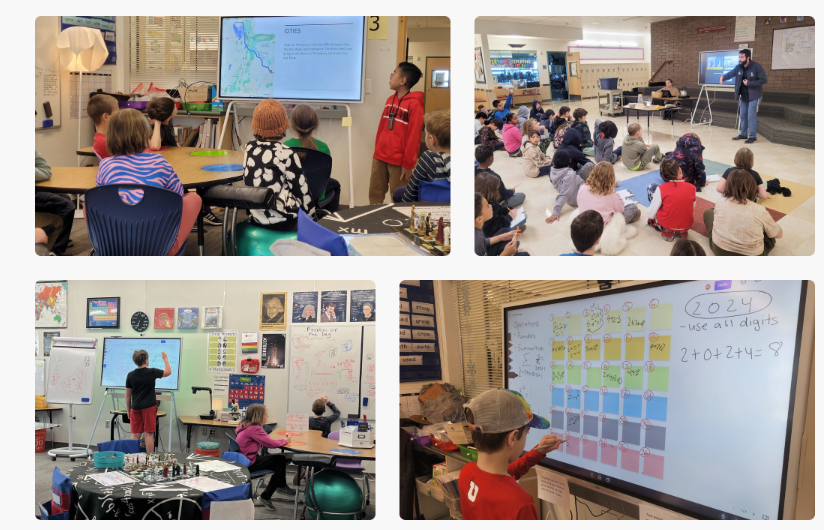The availability of different learning modalities has dramatically transformed in recent years, with online learning evolving from a niche option to a mainstream educational approach. This digital revolution in education requires understanding the pros and cons of online school for students, parents, and educators alike. Whether you’re considering a fully virtual program or a hybrid classroom approach, this comprehensive guide will help you weigh the benefits and challenges to make an informed decision about your educational journey.
What is Online School?
Online school encompasses educational programs delivered primarily through digital platforms rather than traditional brick-and-mortar classrooms. These virtual learning environments utilize various technologies to facilitate instruction, collaboration, and assessment without requiring physical presence in a classroom.

Modern online schools offer diverse formats, from fully asynchronous courses where students work entirely at their own pace to structured synchronous classes with scheduled virtual meetings. Many programs blend these approaches, providing recorded lectures alongside live discussions and interactive activities. The common thread is the use of digital tools to create accessible, flexible learning experiences that can be tailored to individual distance learners’ needs.
Unlike the emergency remote teaching and learning many experienced during the pandemic, well-designed online schooling features purpose-built curricula specifically optimized for digital delivery. These programs leverage interactive multimedia content, collaborative tools, and specialized learning management systems to create deeply engaging educational experiences.
Who Benefits from Online Learning?
While online education offers advantages for many, certain groups find particular value in the flexibility and accessibility of virtual learning environments:
Students
The flexibility of online learning serves diverse student populations. High-achieving students gain access to accelerated options and advanced coursework, while those who struggle in traditional settings benefit from self-paced learning and customized approaches. Students with health challenges or physical disabilities find that online learning removes barriers by eliminating commutes and providing accessible materials. Athletes, performers, and others with demanding schedules can balance education with their pursuits without sacrificing either.
Parents
For parents, online schooling offers greater involvement in their children’s education with direct visibility into curriculum content and their child’s progress. Working parents appreciate the flexible scheduling that accommodates professional obligations. Parents of children with unique learning needs often find that online programs allow for more personalized approaches in optimized home environments with fewer distractions.
Educators
Teachers in online environments discover new dimensions to their practice through innovative instructional design and assessment strategies. Digitally driven learning experiences allow teachers to utilize a wider set of multimedia teaching tools, replacing traditional dry erase boards. The digital format offers educators a better work-life balance by eliminating commutes and providing flexible scheduling. Robust analytics help identify struggling students earlier and target interventions more precisely. Administrators can reach broader student populations and implement data-driven improvements more rapidly than in traditional settings.

Advantages of Online Learning and Classes
Online education offers numerous benefits that have contributed to its growing popularity among both educators and learners:
Flexibility and Convenience
Perhaps the most celebrated benefit of online education is its remarkable flexibility. Students can access coursework from virtually anywhere with an internet connection, eliminating geographic barriers to quality education. This flexibility extends to scheduling as well—many online programs allow students to complete assignments during their optimal productivity periods, whether that’s early morning or late evening. For individuals and families juggling multiple commitments, this convenience is monumental. Parents can coordinate their children’s education around work schedules, appointments, and family activities without the rigid constraints of traditional school hours.
Anytime, Anywhere Access
The 24/7 availability of course materials represents a generational shift in educational accessibility. Students can review lectures repeatedly, slow down explanations of difficult concepts, or accelerate through familiar material—options rarely available in traditional classrooms. This persistent access to resources means learning can happen whenever inspiration strikes or questions arise. This accessibility particularly benefits students in different time zones or with irregular schedules. International students can participate in programs without relocating through digital whiteboard software, and those who also work can still access quality education.
Self-Paced Learning
Online education’s inherent flexibility allows students to progress through material at rates that match their individual learning needs. Quick learners can advance rapidly without waiting for peers, while those who need more time can spend it mastering fundamentals before moving forward. This personalization helps prevent both boredom and frustration, keeping students engaged in their optimal learning zone. The self-paced nature of many online programs also accommodates life’s unpredictability. Students can accelerate during periods of lighter external commitments and slow down during busy seasons without derailing their educational progress.
Cost and Time Savings
The financial benefits of online learning extend beyond tuition differences. Students save substantially on commuting costs, housing expenses, meal plans, and physical textbooks. Many online programs utilize open educational resources and digital materials that significantly reduce course material expenses. Time savings are equally significant. Eliminating commutes can reclaim hours each week for studying, family time, or personal pursuits. The efficiency of online learning, often without classroom management issues or unrelated discussions, means course content can be covered more quickly without sacrificing comprehension.

No Weather-Related Closures or Delays
A significant advantage of online learning is its immunity to weather-related interruptions that often impact traditional in-person education. Severe weather events-such as snowstorms, heavy rain, hurricanes, or extreme heat-can force schools to close or delay classes, disrupting academic schedules and causing students to miss valuable instruction time. With online classes, education continues seamlessly regardless of local weather conditions. Students and educators can participate from the safety and comfort of their homes, ensuring consistent access to coursework and minimizing lost learning opportunities. This reliability is especially valuable in regions prone to frequent weather disruptions, where travel can be hazardous. By removing weather as a barrier, online education provides a stable and predictable learning environment, supporting uninterrupted progress throughout the academic year.
Broader Course Selection and Customization
Online learning breaks down geographic limitations on course availability. Students can access specialized courses, unique electives, and advanced subjects that might not be offered locally. This expanded selection allows for more personalized educational pathways aligned with specific interests and career goals. The digital format also enables innovative approaches to customization. Adaptive learning platforms can adjust content presentation based on individual performance, ensuring students receive appropriate challenges and support.
Development of Independence and Time Management Skills
The autonomous nature of online learning naturally cultivates crucial life skills. Students must learn to manage their time effectively, prioritize tasks, and maintain motivation without external structure. These self-regulation abilities transfer directly to college and workplace success, where independent functioning is essential. Digital literacy—now absolutely fundamental in virtually every profession—develops naturally through online education. Students become proficient with various technologies, communication platforms, and digital collaboration tools.
Challenges of Online Learning and Classes
Despite its many advantages, online education presents several challenges that students and educators must navigate to ensure successful learning outcomes:
Lack of Face-to-Face Interaction
Despite advances in video conferencing and collaboration tools, online environments still cannot fully replicate the richness of in-person human connection. The spontaneous discussions, nonverbal cues, and relationship-building that happen naturally in physical classrooms require intentional effort in virtual spaces. For subjects requiring physical demonstration or hands-on practice, the online format presents obvious challenges. While innovative solutions like virtual labs, remote collaboration tools, and simulation software help bridge this gap, some experiential learning remains difficult to translate to digital environments.
Potential for Distraction and Isolation
The home environment, while comfortable, contains numerous distractions that can derail focus. From household activities and family interruptions to the temptations of social media and entertainment platforms just a click away, maintaining concentration requires significant discipline. The social isolation of learning alone represents another significant challenge. Without regular peer interaction, students may miss opportunities for collaborative learning, friendly competition, and the motivation that comes from shared educational experiences.
Some students report that extended screen time leads to digital fatigue, affecting both their learning experience and overall well-being. The physical effects of prolonged device use—including eye strain, posture issues, and disrupted sleep patterns—require proactive management strategies.

Dependence on Technology and Reliable Internet
Technical issues can disrupt the learning process in ways that don’t affect traditional education. Internet outages, software glitches, or hardware failures can prevent access to time-sensitive materials or assessments. This vulnerability creates stress and potential inequities for students without reliable technology access.
The digital divide remains a significant concern, with not all students having equal access to high-speed internet or appropriate devices. While mobile options have expanded accessibility, complex coursework often requires capabilities beyond what smartphones can provide.
Greater Need for Self-Motivation and Discipline
Without the external structure and accountability of physical classrooms, some students struggle to maintain consistent engagement. The freedom that makes online learning attractive also requires greater internal motivation and self-discipline. Students must actively choose to engage with material rather than having engagement partially enforced by physical presence. Procrastination becomes a more significant risk in self-paced environments. Without regular face-to-face check-ins and the social pressure of keeping pace with classmates, some students delay work until deadlines loom, leading to rushed completion and superficial learning.
Smart whiteboard tools like the Vibe Board S1 are helping address these challenges by creating more interactive and collaborative virtual experiences. With features like real-time multi-user collaboration and intuitive touchscreen interfaces, these interactive spaces help recreate some of the spontaneity and connection of face-to-face learning in digital spaces.
Online School for Different Educational Levels
The implementation and effectiveness of online education vary significantly across different age groups and academic stages, with each level requiring unique approaches to maximize learning outcomes and address age-specific challenges.
Elementary and Middle School
Young learners present unique considerations in online environments. Their developing attention spans, technology literacy, need for concrete experiences, and emerging self-regulation abilities require thoughtfully designed programs with significant adult support. Successful elementary online learning typically involves shorter screen sessions, frequent movement breaks, and substantial parent involvement.
Interactive elements become uniquely crucial for this age group. Engaging multimedia content, gamified learning activities, and opportunities for creative expression help maintain motivation. Tools like the Vibe Board S1 can transform passive viewing into active participation through touchscreen interactivity and collaborative drawing features.
High School
Adolescents generally bring greater independence and digital fluency to online learning, but still benefit from structured support systems. Effective high school programs balance flexibility with accountability, providing clear expectations while respecting students’ growing autonomy. Social development remains important during these formative years. Thoughtful online programs incorporate virtual clubs, discussion groups, and collaborative projects to foster peer connections and community building.
College and career preparation takes on special significance in online high schools. Digital courses can offer specialized subjects and advanced placement options that expand post-secondary opportunities. Additionally, the self-management skills developed through online learning transfer directly to college readiness.
College and University
Higher education has most extensively embraced online learning, with options ranging from individual courses to complete degree programs. This flexibility particularly benefits non-traditional students who balance education with work and family responsibilities. The pros and cons of online school become especially nuanced at this level, where student goals and circumstances vary widely. The best programs offer options that accommodate diverse preferences while maintaining educational quality.
Professional networking takes different forms in virtual higher education but remains vital for career development. Effective programs facilitate connections through group projects, industry partnerships, and virtual networking events.
Making Online Learning Work for You
Success in online education requires intentional strategies tailored to individual learning styles. Creating a dedicated study space free from distractions establishes boundaries for focused learning, while effective time management with specific work blocks helps prevent procrastination.
 Teacher using a Vibe Board in a K–12 classroom to enhance student engagement through interactive teaching.
Teacher using a Vibe Board in a K–12 classroom to enhance student engagement through interactive teaching.Active participation transforms passive consumption into genuine learning. Tools that facilitate engagement, like the Vibe Board S1 with its interactive whiteboard capabilities, directly address many of the challenges of online learning. The board’s real-time collaboration features help recreate the spontaneous discussions and peer interactions often missing from virtual classrooms, reducing feelings of isolation and making learning more social and dynamic. Its clear interface and multi-user support allow students to visualize concepts together, annotate lessons, and work on group projects, fostering a sense of community and accountability.
For those concerned about technology interruptions or digital fatigue, the Vibe Board’s integration with popular educational platforms and automatic cloud saving ensures that learning continues smoothly, even if devices or connections change. By making lessons more interactive and visually engaging, the board helps maintain focus and motivation, counteracting common distractions and supporting self-discipline.
Building connections with instructors and peers requires proactive effort, but provides motivation and support that makes education more meaningful. The pros and cons of online school will weigh differently for each learner based on their unique circumstances and goals. By thoughtfully evaluating these factors and implementing targeted strategies, students can create rewarding online learning experiences tailored to their individual needs.
Learn more about how the Vibe Board S1 is elevating remote, hybrid, and in-person learning→







-1sbltxxq4FYxHrXrwJVLsCDNsXpqNa.webp)
-5Zp0pmSytvcuYDVs1LvuwplKuRneK0.webp)
